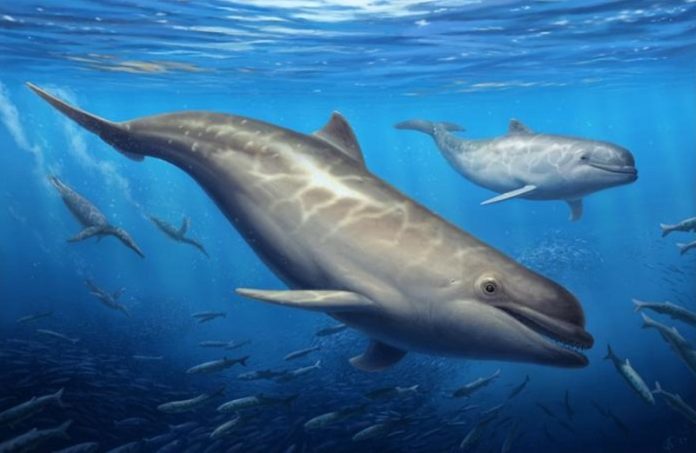
Have you ever wondered about dolphins’ ancient ancestors and how they might have looked?
We now have an answer, thanks to a newly discovered early species of toothed whale, named Olympicetus thalassodon.
This species lived about 28 million years ago along the North Pacific coastline.
This exciting discovery, along with a few others, is allowing scientists to piece together the early history and evolution of modern dolphins, porpoises, and other toothed whales.
This fascinating discovery was made by Puerto Rican paleontologist Jorge Velez-Juarbe from the Natural History Museum of Los Angeles County.
His findings were recently published in an open-access journal called PeerJ Life and Environment.
Olympicetus thalassodon, according to Dr. Velez-Juarbe, had unique features that separate them from other groups of toothed whales. They had multiple-cusped teeth, symmetrical skulls, and forward-positioned nostrils.
These characteristics make them look like a link between ancient whales and today’s familiar dolphins.
Interestingly, Olympicetus thalassodon wasn’t the only unique creature found. There were two more related species of toothed whales described in the same research paper.
These fossil remains were all collected from a geological area known as the Pysht Formation, which is found along the coast of the Olympic Peninsula in Washington State and dates back between 26.5–30.5 million years ago.
The study also tells us that Olympicetus and its relatives belonged to a family known as Simocetidae. This group is one of the earliest to split off from other toothed whales and is known only from the North Pacific.
These species were part of an unusual group of animals that included extinct flightless birds that resembled penguins, early relatives of seals and walruses, and toothed baleen whales.
The Simocetidae showed different body sizes, teeth, and other feeding structures, hinting at varied ways they hunted and preferred prey. Olympicetus, for instance, had peculiar teeth. Their teeth varied along the jaw, unlike modern toothed whales whose teeth look quite similar.
However, there’s a lot we still don’t know about these ancient toothed whales.
For example, it’s unclear whether they could use echolocation (the ability to locate objects by reflected sound), like their modern relatives.
Some signs hint at the possibility, such as particular structures in their skulls.
Earlier studies suggested that young individuals might not hear ultrasonic sounds, but scientists are keen to study the ear bones of older whales to see if this changes as they matured. So, the exciting journey of unveiling the life of these ancient creatures continues!



